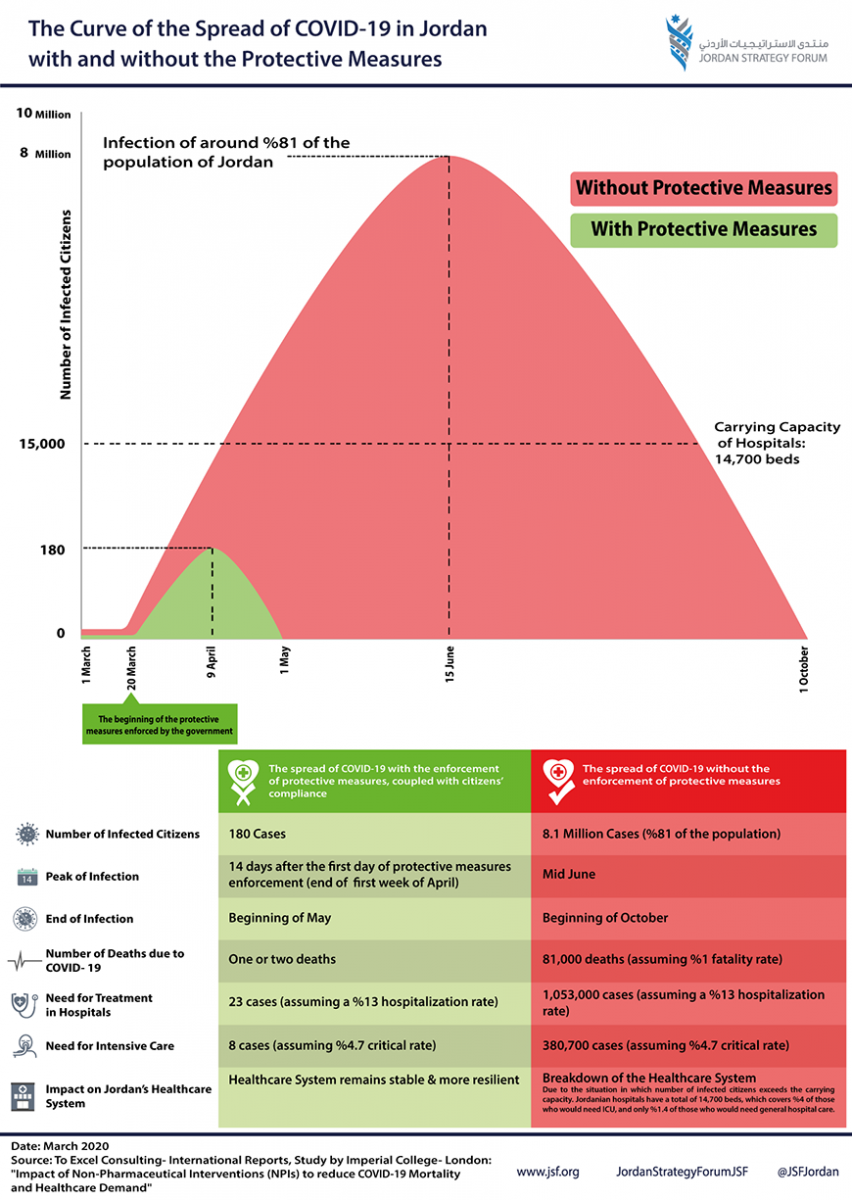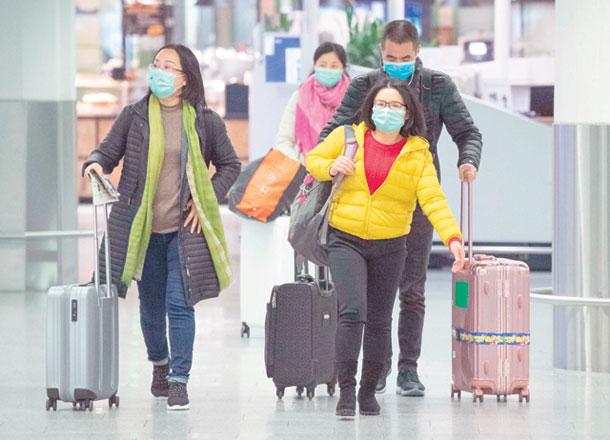You are here
8.1m or 180 COVID-19 cases? Public compliance with measures will determine outcome, study shows
By Maram Kayed - Mar 24,2020 - Last updated at Mar 24,2020
AMMAN — What separates two scenarios — one with 180 and one with 8.1 million coronavirus infections in Jordan — is the public’s commitment to staying in their homes and following all preventive measures, a recent study by the Jordan Strategy Forum has shown.
With the number of deaths caused by the virus ranging from one or two, if quarantine rules are followed, and to 81,000 if they are not, the study stressed that the difference in the number of infections “vastly depends on the government’s intervention and its timely decision-making process, coupled with citizens’ compliance with such regulations”.
Conducted in cooperation with “To Excel Consulting”, the study presented an infographic that imitates a prediction model devised by the University of London, but applied to Jordan.
“The study juxtaposes the great difference between the scenario of citizens committing to preventive procedures and the scenario of letting things develop without any intervention or protection,” the forum stated.
Based on the model, if Jordanians commit to staying in their homes, the number of infections peaks by April 9 to reach 180 cases maximum, afterwards decreasing so that the virus is fully controlled and defeated by May.
Around 23 cases will need to be hospitalised and eight cases will need intensive care based on the first scenario. Assuming a 1-per cent death rate, there is a probability that one or two people will die, but the healthcare system, in this case, would be “steady, stable and flexible”.
Based on a scenario in which quarantine and other preventive measures are broken, more than 80 per cent of the population will likely be infected with the virus, with the number of infected cases reaching its peak of 8.1 millionin mid-June.
In this scenario, more than one million people will require hospital care and more than 380,700 patients will be in need of intensive care, with an estimated 81,000 people likely to die from the virus. The Kingdom will also not get rid of the virus until December of 2020, or possibly later, added the study.
In this case, the healthcare system “will inevitably break down, given that the cases will far exceed its capacity” which, in that scenario, can only serve 4 per cent of those needing intensive care and 1.4 per cent of those needing general care.
The study added thattogether, hospitals in Jordan have a capacity of 14,700 beds.
In a statement, the forum noted that the purpose of the infographic is to spread awareness on the importance of enforcing strict measures during this crisis, and the necessity for compliance on the part of the people of Jordan to reduce the spread of COVID-19.
If widely spread, the virus will have “severe consequences” on the Kingdom’s healthcare system, the lives of citizens and the Jordanian economy in general.
The study has been widely circulated on social media platforms, with former minister of education Walid Maani and other prominent political and economic figures sharing it on their social media platforms.

Related Articles
WUHAN, China — China reported its biggest single-day jump in novel coronavirus deaths on Thursday, as global fears deepened with more infect
Scientists leading the fight against Middle East Respiratory Syndrome (MERS) say the next critical front will be understanding how the virus behaves in people with milder infections, who may be spreading the illness without being aware they have it.
GENEVA — The new coronavirus pandemic could severely disrupt access to anti-malaria nets and drugs in sub-Saharan Africa, the World Health O













